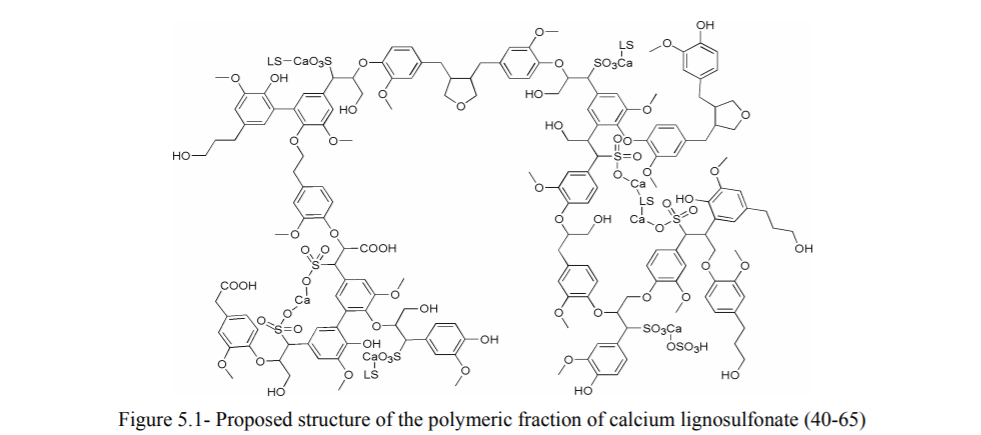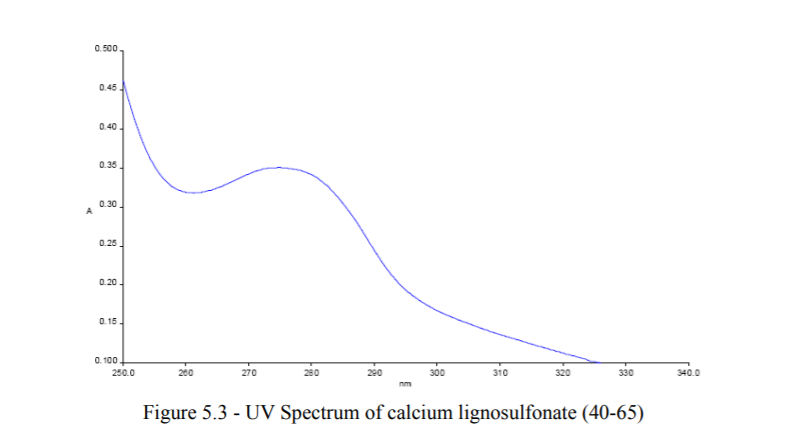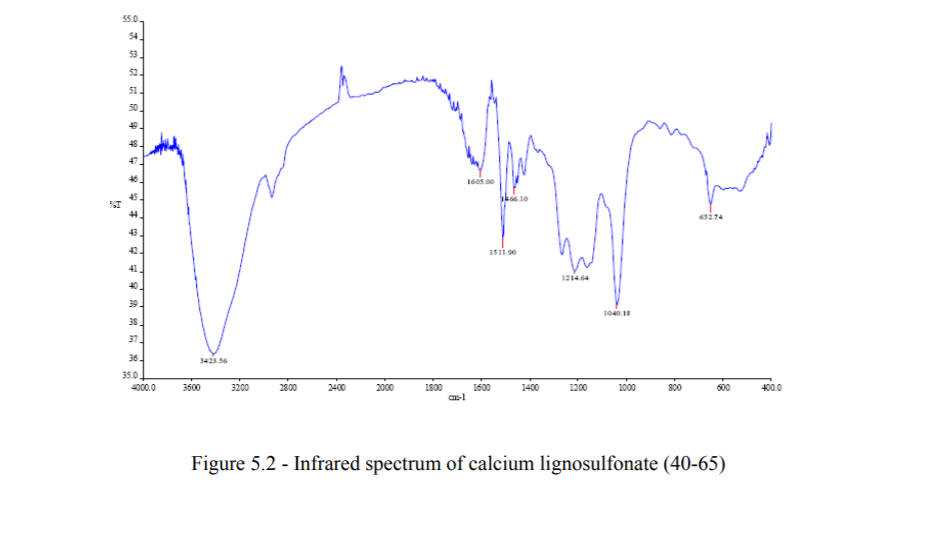1. Composition
Lignin is the second largest component of wood. It is a highly polymerized material that makes up the middle lamella of woody fibers and holds the fibers together.
The basic units of the polymeric structure consist of three aromatic propenyl alcohols (monolignols): coniferyl alcohol (4-(3-hydroxy-1-propenyl)- 2-methoxyphenol), p-coumaryl alcohol (4-[(E)-3-hydroxyprop-1-enyl]phenol), and sinapyl alcohol (4- hydroxy-3,5-dimethoxycinnamyl alcohol), of which coniferyl alcohol represents the principle unit in lignin.
Methoxy groups are abundant on the polymeric structure providing many reactive sites and promoting its low water solubility. In calcium lignosulfonate (40-65), however, sulfonate groups are attached to the alkane
backbone units to confer water solubility and calcium anions, introduced with the calcium sulfite during the process of manufacture, stabilize them.
The degree of sulfonation on the alkane backbone has also been
established as a criterion for the identification of the additive. An upper limit of 5.0 % for calcium content was also set.
Ultraviolet spectroscopy confirms the presence of phenyl groups in the additive and infrared spectroscopy reveals bands characteristic of sulfonate at 1210-1220 cm-1, 1037 cm-1, and 655 cm-1.
A proposed structure of the polymeric fraction of calcium lignosulfonate (40-65) is presented in Figure 5.1. Representative IR and UV spectra are presented in Figures 5.2 and 5.3, respectively.
2 Impurities (including degradation products)
Impurities in calcium lignosulfonate (40-65) include monosaccharides from wood cellulose, sulfite residues and potentially arsenic and various metallic elements. Filtration, evaporation and ultrafiltration aim at reducing the content in the final product to not more than 5 % reducing sugars and not more than 0.5 % sulfite, on the dried basis, which are the bases for the establishment of corresponding limits in the specifications monograph.
A typical analysis provided by the sponsor of a single sample of the additive
showed the presence of the following reducing sugars: mannose (2.2 %), xylose (1.1 %), galactose (0.6 %),glucose (0.4 %), arabinose (0.3 %), and rhamnose (0.1%). The specifications monograph also contains maximum limits on Loss on drying (8.0 %), Total ash (14.0%), arsenic (1 mg/kg), and lead (2 mg/kg).


